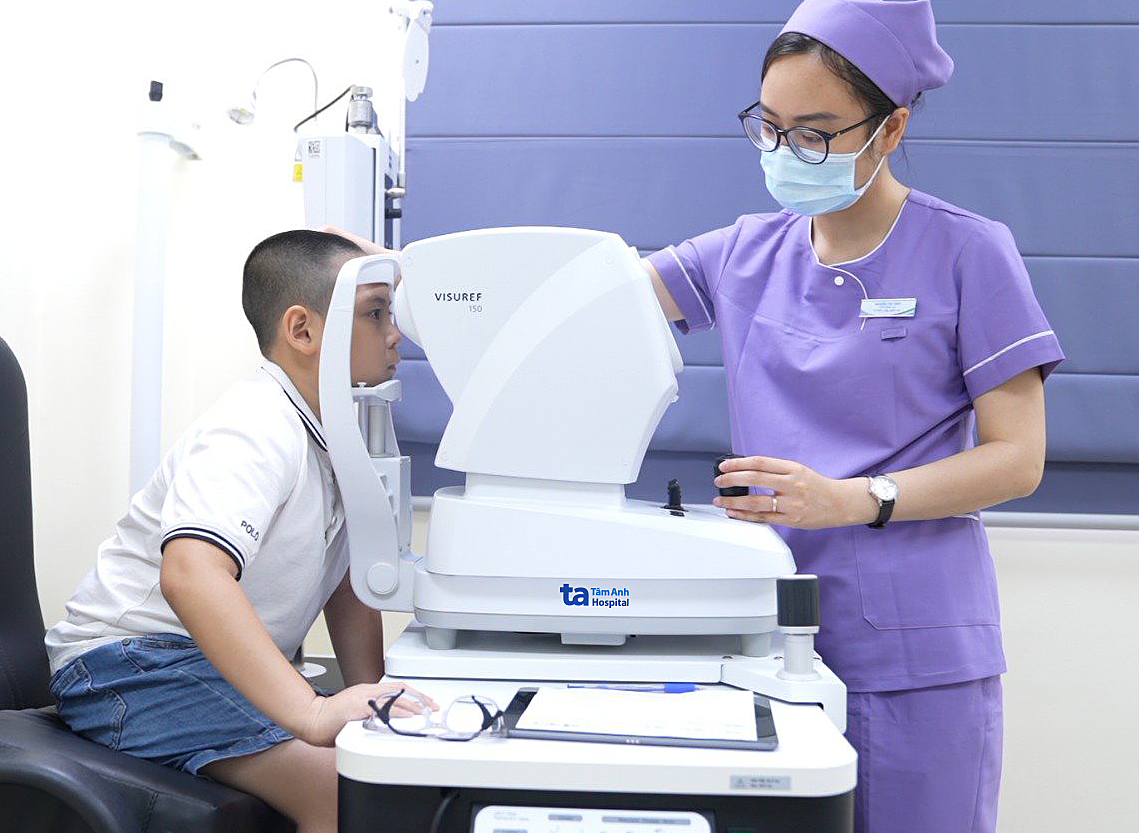Answer:
Astigmatism makes it difficult to see clearly at both near and far distances. However, it is an independent refractive error, not a combination of nearsightedness and farsightedness. Astigmatism occurs when the cornea is irregularly shaped, causing light entering the eye to focus at multiple points on the retina. This results in blurred, distorted, or warped vision. People with astigmatism may also see halos around lights or experience double vision.
Astigmatism often has no early recognizable signs, especially in young people, due to the eye's good focusing ability. However, this refractive error begins to affect vision, causing eye strain, headaches, or blurred and distorted vision, whether at near or far distances. When looking at text, individuals with astigmatism may see blurry, jumbled, or distorted letters. These symptoms cause fatigue after extended periods of work or study, especially when using a computer, reading, or watching television.
Astigmatism can also cause other problems such as frequent headaches, eye strain, and sometimes blurred night vision while driving, especially in low-light conditions. This can significantly affect the quality of daily life.
There are many effective methods for correcting astigmatism. Mild cases can be corrected with eyeglasses or contact lenses. If astigmatism occurs along with nearsightedness or farsightedness, it is more complex and requires lenses tailored to each refractive error. For example, for individuals with astigmatism and nearsightedness, the doctor prescribes convex lenses (for nearsightedness) combined with astigmatism-correcting lenses to address both refractive errors.
For individuals with severe astigmatism or astigmatism combined with other refractive errors who prefer not to wear glasses, refractive surgery may be considered. This procedure corrects the curvature of the cornea, allowing light to focus correctly on the retina, thereby improving vision. Some common refractive surgery methods currently available include Lasik Pro, Smile Pro, and Phakic. However, not everyone is suitable for surgery, and a doctor's consultation is necessary.
 |
A child undergoes refraction measurement to check for astigmatism. Illustration photo: Tam Anh Hospital. |
Your daughter's 0.75 diopters of astigmatism is mild but can still affect her vision, especially when she studies, reads, or looks at objects at varying distances. You should have her wear astigmatism-correcting glasses, which require an eye exam and proper prescription. She should have follow-up checkups every 6 months to monitor the progression of astigmatism because, during her developmental years, this refractive condition can change rapidly.
Some healthy habits you can guide your child to adopt include limiting screen time, maintaining a proper reading distance (30-35 cm), sitting upright in well-lit areas, and increasing outdoor activities.
Associate Professor, Doctor Nguyen Thi Thu Hien
Head of the Refractive Department, High-Tech Eye Center
Tam Anh General Hospital
| Readers can submit questions about eye diseases here for doctors to answer. |












